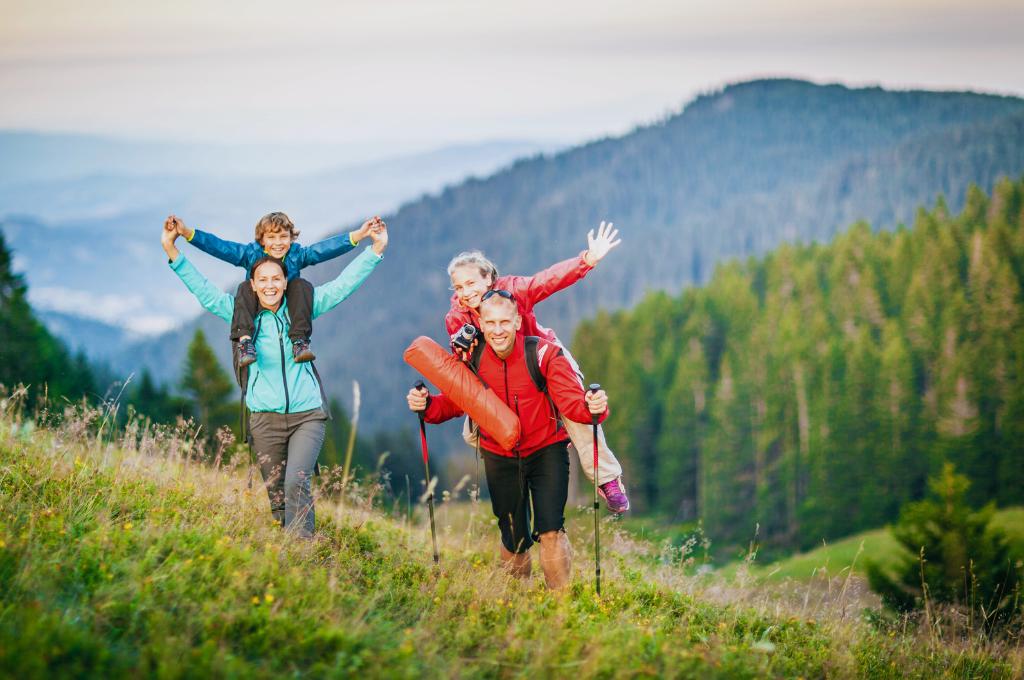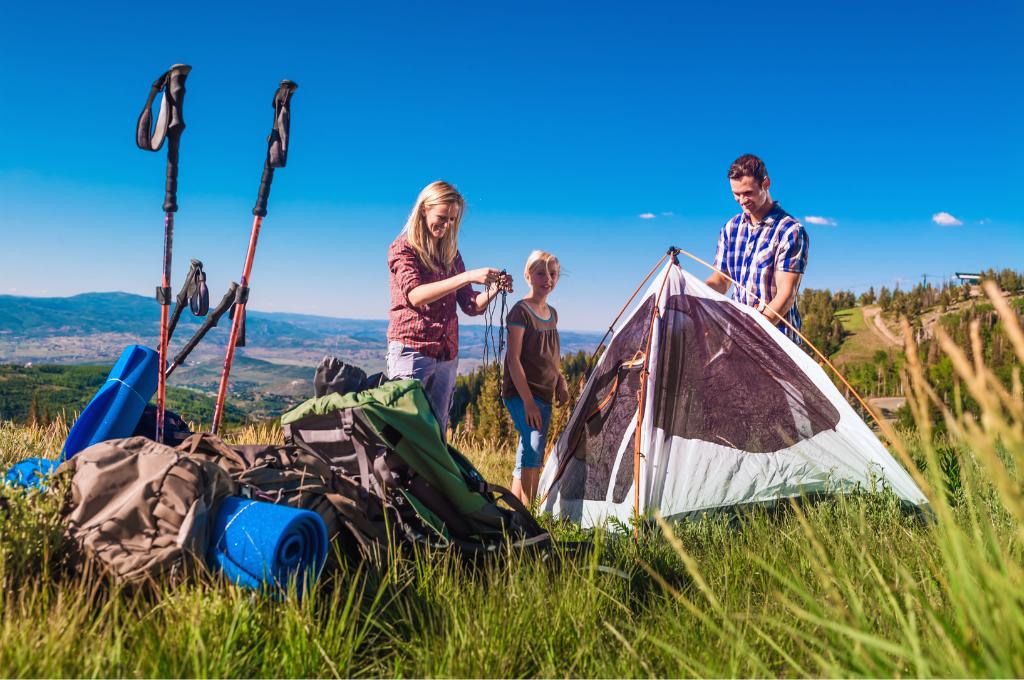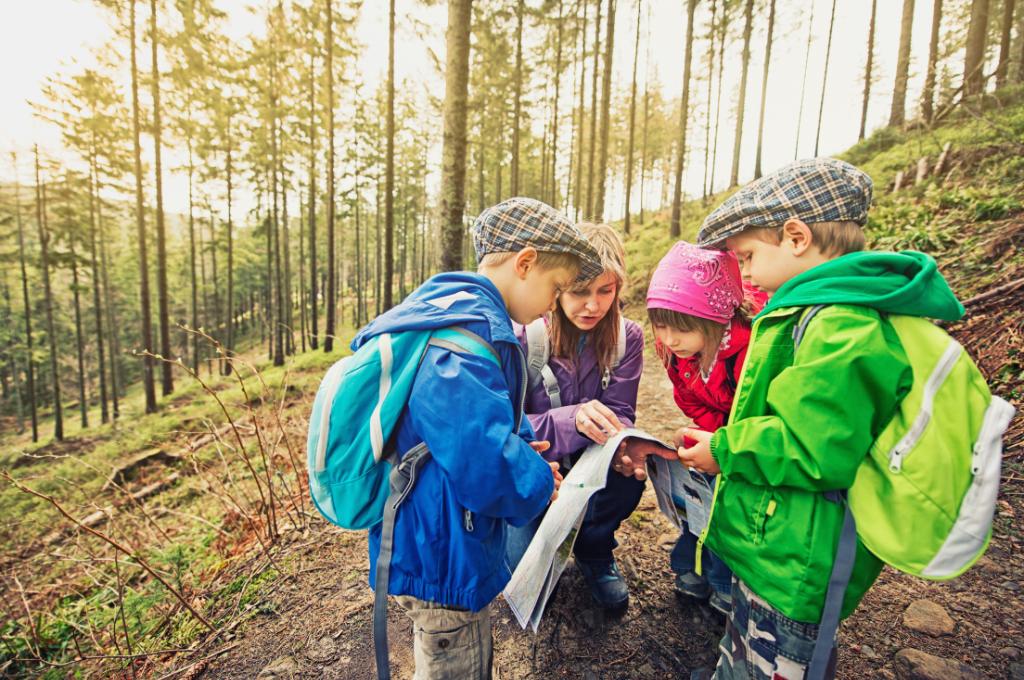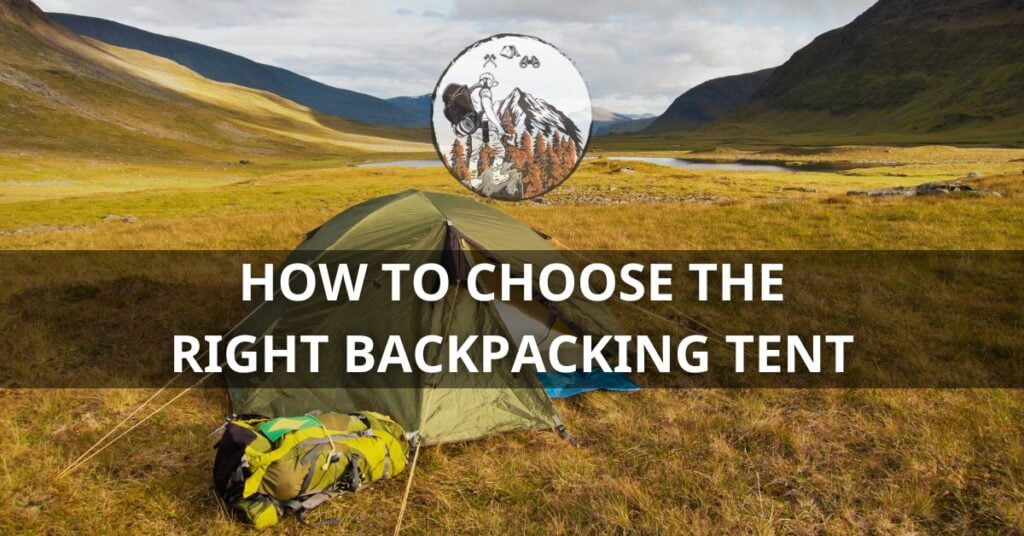Backpacking with kids is more than just a family holiday; it’s an invaluable opportunity for your little ones to connect with nature, learn life skills, and nurture a sense of adventure. As a parent, the thought of taking your children on a backpacking adventure can be both Thrilling and intimidating.
From selecting the right gear to ensuring their safety and engagement, there’s a lot to consider. However, the rewards of these shared experiences are boundless.
In this comprehensive guide, we’ll walk you through the essentials of planning a backpacking trip with your kids and making the most out of your adventure while keeping safety a number one priority. Let’s explore!
Table of Contents

I. Introduction to Backpacking with Kids
The Why and the Wonder of Backpacking as a Family
Backpacking is a beloved outdoor activity for many. It’s a way to declutter your mind, connect with nature, and appreciate the simplicity of life. However, when you bring children on a backpacking trip, things can become complicated and less simple. It can turn into an energetic, sometimes chaotic, but always rewarding family adventure.
The Benefits of Outdoor Adventures for Children
Outdoor adventures offer a host of benefits for children’s development. Exposure to nature enhances cognitive development, improves physical health, and fosters a strong sense of environmental stewardship. Backpacking also provides a unique context for learning problem-solving, responsibility, and resilience.
II. Preparing for the Journey
Choosing Suitable Destinations
Selecting the right destination is crucial to the success of your trip. Consider factors such as the difficulty of the trail, the length of the hike, and the level of amenities available at the campsite.
Choosing a trail and destination that aligns with your child’s age, fitness level, and interests is important. National parks often provide a variety of trails suitable for families, which can offer a great starting point.

Essential Gear Checklist for Backpacking with Kids
With the right gear, you can empower your children to take responsibility for their needs, building confidence and self-reliance.
1. Child-Sized Backpacks
Choose a backpack that fits your child comfortably, with adjustable, padded shoulder straps and a hip belt. Look for lightweight options with enough capacity for them to carry their water, snacks, and a layer of clothing.
2. Lightweight Tent
Choose a tent that’s easy to set up and spacious enough to accommodate your family and gear. Look for tents with a durable floor, adequate ventilation, and a rainfly for unexpected showers.
3. Kid-Friendly Sleeping Bags
Opt for sleeping bags that are suited for the expected weather conditions. Mummy-style bags are ideal for colder nights, while rectangular bags offer more room to move. Consider ones with synthetic insulation as they maintain warmth even when damp and dry quickly.
4. Hydration Systems
Hydration packs or lightweight water bottles that fit in backpack side pockets are a must. Encourage hydration by choosing bottles with fun designs or built-in filtration systems for drinking directly from natural water sources safely.
5. Appropriate Clothing
Dress your children in moisture-wicking layers to manage sweat and retain body heat. Be sure to pack waterproof and windproof outer layers, as well as extra socks and undergarments. Choose quick-drying fabrics that offer UV protection for sunny days.
6. First-Aid Kit
Carry a comprehensive first-aid kit tailored to your family. It should include items like bandages, antiseptic wipes, blister prevention, children’s pain relief medicine, and any personal medications.
7. Navigation Tools
A waterproof map of the area and a reliable compass or a GPS device are crucial. Teach your children basic navigation skills as a fun and practical aspect of the trip.
8. Multi-Tool
A good multi-tool is handy for various tasks, from preparing food to making minor gear repairs. Ensure it includes scissors, a knife, and tweezers.
9. Child Carrier Backpack
For very young children, a comfortable child carrier backpack is invaluable. Make sure it has adjustable straps for the adult, a secure seat for the child, and storage space for essentials
10. Portable Cooking Gear
If you plan to cook, bring along a light backpacking stove, fuel, and kid-friendly cookware like a small pot and eating utensils. Consider pre-packaged meals or simple ingredients to keep meals easy and fun.
Optional Gear and Entertainment Items for Kids
While the essentials will cover most of your bases, there are additional optional items that can enhance the backpacking experience for your kids. Here’s a list of optional gear and entertainment that you may consider bringing along:
1. Binoculars
A compact pair of binoculars can engage kids more deeply with their environment, whether they are bird-watching or simply examining the landscape.
2. Disposable Cameras
Give your children disposable cameras to encourage them to observe and capture moments from their perspective.
3. Journal and Colored Pencils
Provide a journal and a set of colored pencils for kids to document their adventure through drawing and writing.
4. Insect Catching Kit
An insect-catching kit can be an educational and fun way for kids to learn about the different insects they might come across.
5. LED Headlamps
LED headlamps for each child not only keep them safe but can also make the camping experience during the evening more fun.
6. Compact, Travel-sized Board Games
For time spent in the tent or at the campsite, pack a few travel-sized board games that your family can enjoy together.
7. Portable Hammock
A lightweight portable hammock is perfect for relaxing moments and can be a fun spot for kids to play or read in.
8. Solar Chargers
In case your children have digital devices for educational purposes or e-readers, a solar charger ensures you can keep them powered without access to electricity.
9. Glow Sticks
At night, glow sticks can be used for safety, makeshift nightlights, or just for after-dark fun.
10. Games and Educational Materials
Consider packing a lightweight nature guidebook, star chart, or compact games for entertainment during downtime. A book on local flora and fauna or astronomy can make for a great educational tool while on the trail. These items can enhance the educational experience and keep spirits high.
By considering these optional items, you can cater to your children’s interests and enhance their enjoyment and learning experience on the backpacking trip.
Remember, when backpacking with kids, it’s all about striking a balance between being prepared and not overpacking. Involve them in the packing process to ensure they are comfortable carrying their backpack and to give them a sense of ownership in the adventure.
Safety Considerations: Pre-Trip Planning
Before you set out, ensure you have a detailed trip plan including your route, approximate schedule, and a check-in system with friends or family. Educate your children on basic trail safety, like staying on the path and what to do if they get separated from the group.
Remember, a safe and well-planned trip is the foundation for a lifetime of outdoor enthusiasm.
III. Engaging Kids in Backpacking Preparation
Involving Children in Packing: Tips and Tricks
Allowing children to help with packing — even to a limited extent — can cultivate feelings of ownership and excitement about the trip. Start with a family packing list and give them age-appropriate responsibilities, such as managing their clothing and snacks. This will also teach them the importance of being prepared.
Preparing Kids Mentally for the Adventure
Mental preparedness is just as vital as physical preparedness. Have family discussions about what to expect, read books about the trail or the local wildlife, and encourage questions and conversation. The more you can create a sense of expectation and reduce the unknown, the more your kids will be mentally ready for the adventure.
IV. On the Trail: Tips for a Smooth Journey
Managing Pace: Balancing Adventure and Comfort
Take the trail at a comfortable pace for the youngest or least experienced hiker. A slower-paced adventure allows more time for natural exploration and minimizes the risk of both physical and emotional burnout.
Fun Activities for Kids on the Trail
Plan fun activities to keep your kids engaged and excited. Nature bingo, I-Spy, or a scavenger hunt for specific items like unique rocks or leaves are great interactive ideas. Don’t schedule these activities, rather, use them as spontaneous pit stops to keep energy levels high.
Snack Time: Healthy and Portable Options
Snacks are an essential tool for keeping energy levels up. Pack a variety of healthy, portable, and quick snacks that your kids enjoy. Nuts, dried fruits, granola bars, and crackers are all great options. Consider the weight and volume of the snacks, and pack them in accessible places within their backpacks.
V. Overnight Camp Setup and Safety Measures
Setting Up Camp: Simplified Guide
The first step in setting up camp is to find a suitable location that is at least 200 feet away from any water source. Engage the children in setting up their tents if they are old enough, and make it a fun activity by turning it into a race or a contest.
Safety Protocols at Campsites
Discuss camp safety rules with your kids before setting off. Teach them how to properly extinguish a campfire, the importance of keeping food properly stored, and how to recognize potential hazards such as unstable rocks or venomous plants. Always camp within jurisdictional guidelines.
Ensuring Comfortable Sleep for Kids
Make sure your children have warm and comfortable sleeping arrangements. This includes having the right sleeping bag for the weather, a sleeping pad for insulation, and setting up the camp with an eye for comfort and restfulness. Ensure they have everything they need to feel safe, secure, and ready for a good night’s sleep.

VI. Navigating Challenges on the Trail
Dealing with Weather Changes
Teach your children to dress in layers and to expect quick weather changes. Bring a lightweight rain poncho for each child, and know when to call it a day if the weather turns severe. Preparation is key, so always check the forecast before you set out.
Addressing Emergencies: First Aid Basics
Familiarize your children with basic first-aid skills before the trip. They should know how to clean and bandage a wound, treat minor burns, and recognize symptoms of dehydration. A well-stocked first aid kit with children’s medications is a must-have for any backpacking trip.
Managing Fatigue and Keeping Spirits High
When managing fatigue, encourage short rests, and look for energizing snacks or games to keep spirits high. Teach them that it’s okay to feel tired and that taking breaks is part of the adventure. Make the most of rest stops by enjoying light-hearted conversations or sharing stories.
VII. Environmental Awareness and Leave No Trace Principles
Teaching Kids Environmental Responsibility
The outdoors is not just a playground; it’s a classroom. Teach your children to respect nature by adhering to the principles of Leave No Trace, which emphasize minimizing environmental impact and preserving wilderness character.
Practicing Leave No Trace: Tips for Families
Simple acts like carrying out all trash, disposing of waste properly, and respecting wildlife from a distance can instill a lifelong commitment to conservation in your children. Make it a game; challenge them to leave the campsite better than they found it.
VIII. Connecting with Nature: Learning Opportunities
Nature Exploration Games for Kids
Nature presents a myriad of opportunities for learning disguised as fun. Play games that encourage observation, like identifying different bird sounds or tracking animal prints. These activities not only educate but truly engage children in the natural world around them.
Identifying Flora and Fauna Together
Take breaks to examine and discuss the plants and animals you encounter. Encourage your children to ask questions and when possible, find the answers together. This active exploration will enhance their understanding and appreciation of the natural environment.
IX. Building Lasting Memories: Capturing Moments
Photography Tips for Family Backpacking Trips
Capture the beauty and the joy of your family’s adventure with a camera or smartphone. Teach older kids the basics of how to take great outdoor photographs. Frame the shots, work with natural lighting, and experiment with different angles to create lasting memories.
Keeping a Travel Journal: Engaging Kids in Reflection
A travel journal is an excellent way for children to record their experiences and reflections. Encourage them to write, draw, or take pictures to document their favorite moments. Reflecting on the trip can enhance their appreciation for the experience and serve as a memento they’ll treasure.
X. Overcoming Hurdles: Common Challenges and Solutions
Dealing with Homesickness
Homesickness is a common hurdle for kids on a backpacking trip. Address it with patience and empathy. Encourage them to express their feelings and remind them of the adventure’s purpose.
Handling Equipment Malfunctions
Be prepared for equipment malfunctions by teaching kids how to perform simple fixes and bring a repair kit. If a piece of gear fails, make it a learning experience; brainstorm solutions together and if necessary, turn the situation into a humorous anecdote for later.
XI. Encouraging Independence: Empowering Kids on the Trail
Assigning Age-Appropriate Tasks
Give children tasks that are appropriate for their age and level of development. This can include everything from carrying a small first aid kit to helping with meal preparation. Independence breeds confidence, and confidence is key to a successful backpacking trip.
Fostering Problem-Solving Skills
Encourage your children to solve problems on their own before intervening. If they come to you with an issue, ask guiding questions that lead them to a solution. This approach nurtures critical thinking skills and a sense of accomplishment when the issue is resolved.
XII. Celebrating Success: Rituals and Traditions
Commemorating Milestones on the Trail
Hiking with kids is full of small but meaningful milestones. When your child climbs their first peak, crosses a flowing river, or sets up their tent for the first time, these moments deserve recognition and celebration. Create traditions around these landmarks to cement them in your family lore.
Family Traditions for Backpacking Adventures
Think about setting up a family tradition for your backpacking adventures. This could involve a favorite meal on the trail, a special campfire story, or a unique call sign for the trip. These traditions build a sense of family identity and anticipation for each new adventure.
Conclusion
Backpacking with kids is a unique combination of the familiar and the unexpected. It’s not just about reaching a summit or setting up a tent. It’s about exploring, building relationships, learning, and personal development – experiences that have a deep impact on a child’s character.
As you venture on the trails that are complicatedly woven through the natural world, you create a legacy of shared moments that form the backbone of your family’s story. This journey is an ever-unfolding map to self-discovery that both parents and children navigate together, step by step, trail by trail.
This shared expedition could be the ember that ignites a lifelong passion for the great outdoors in your children. So pack your bags, grab your kids, and embrace the journey together.
Thank you for exploring our guide to backpacking with kids. If it’s been insightful, please pass on the knowledge and share your adventures!
Happy Adventures and stay safe!
FAQs (Frequently Asked Questions)
Is backpacking safe for children?
Backpacking is relatively safe for children when proper precautions are taken. Be sure to select appropriate trails, educate your kids about safety, and always supervise them.
How do I choose the right trail for my family?
Look for trails that are rated as ‘easy’ or ‘moderate’ with child-friendly terrain. National and state parks often have resources specifically for hiking with kids.
Are there age restrictions for backpacking with kids?
There are no specific age restrictions, but parents should consider a child’s physical and mental readiness. It ultimately depends on your child, most parents find that children can start to handle simple backpacking trips around the age of 5 or 6.
How can I ensure my child stays entertained on the trail?
Incorporate various activities and games that involve the natural environment. Encourage curiosity and exploration.
How do you handle safety concerns, particularly around wildlife?
Teach your kids about wildlife safety and the importance of keeping a safe distance. Make sure they know how to respond if they encounter an animal and keep all food stored securely.



